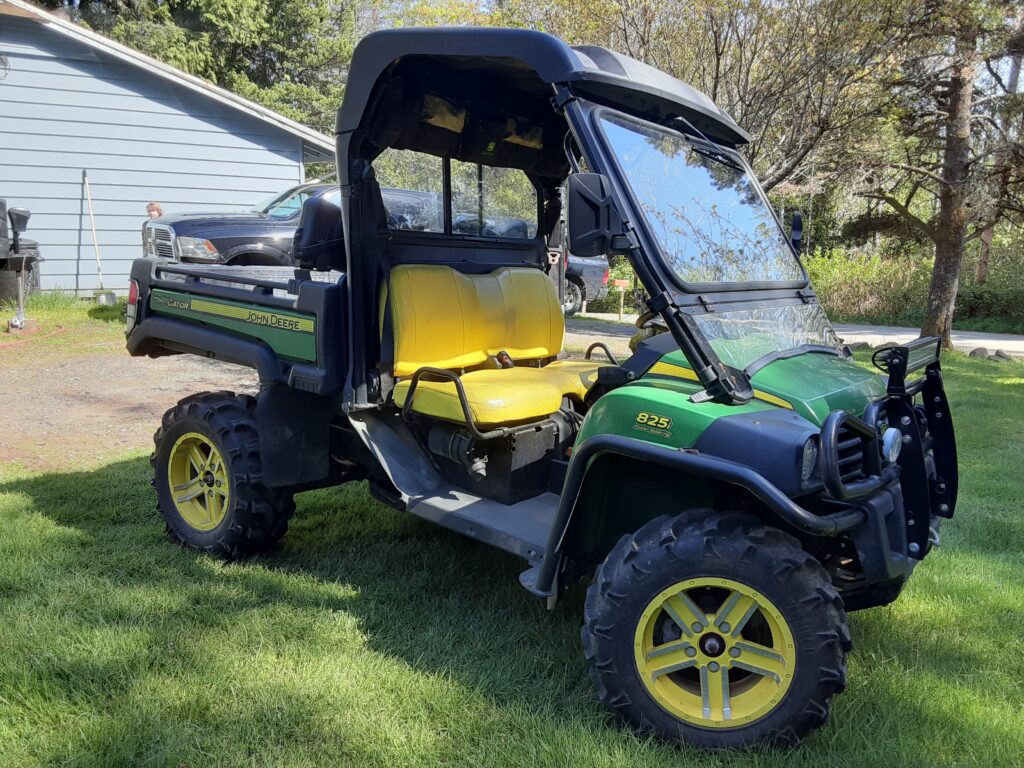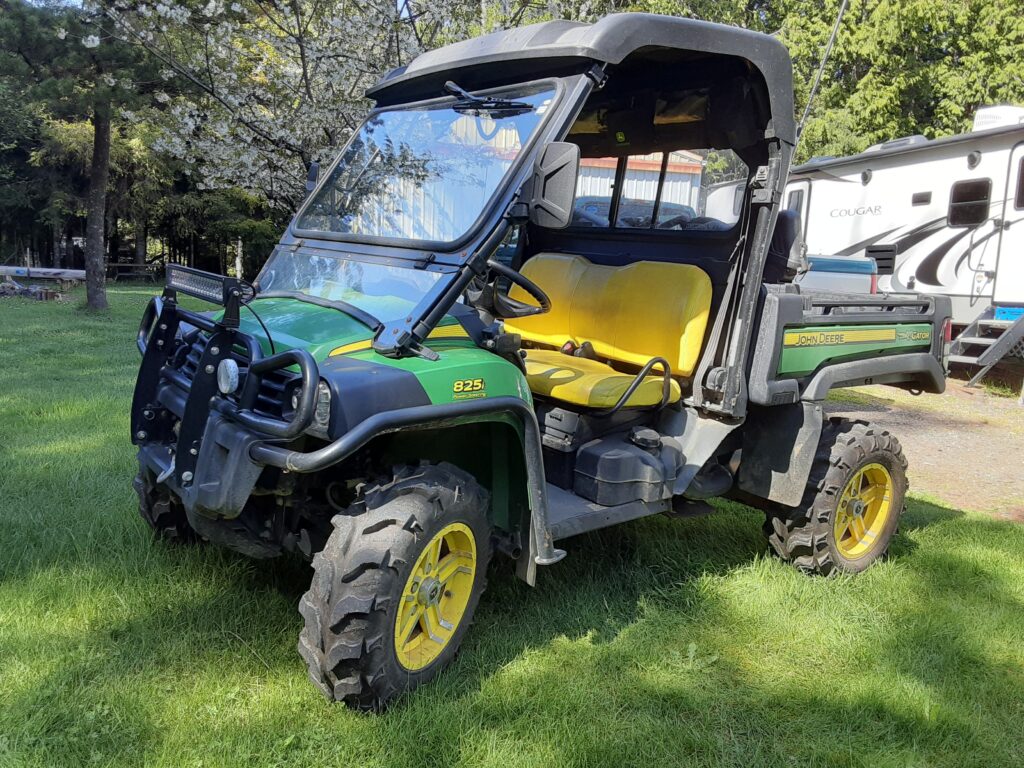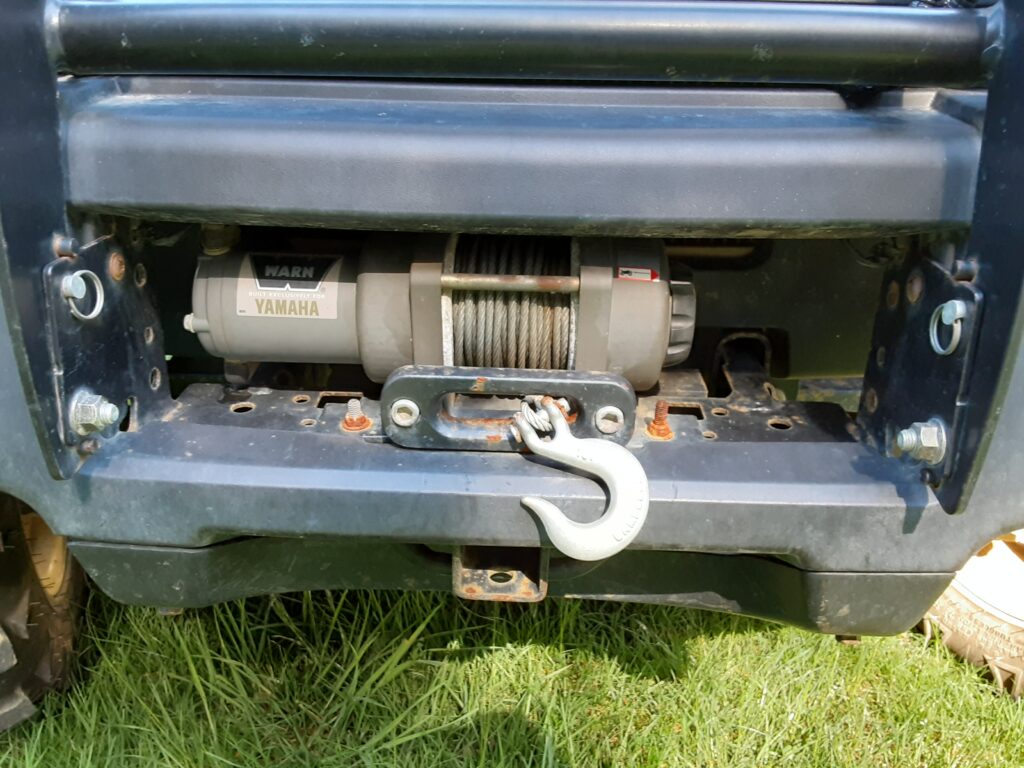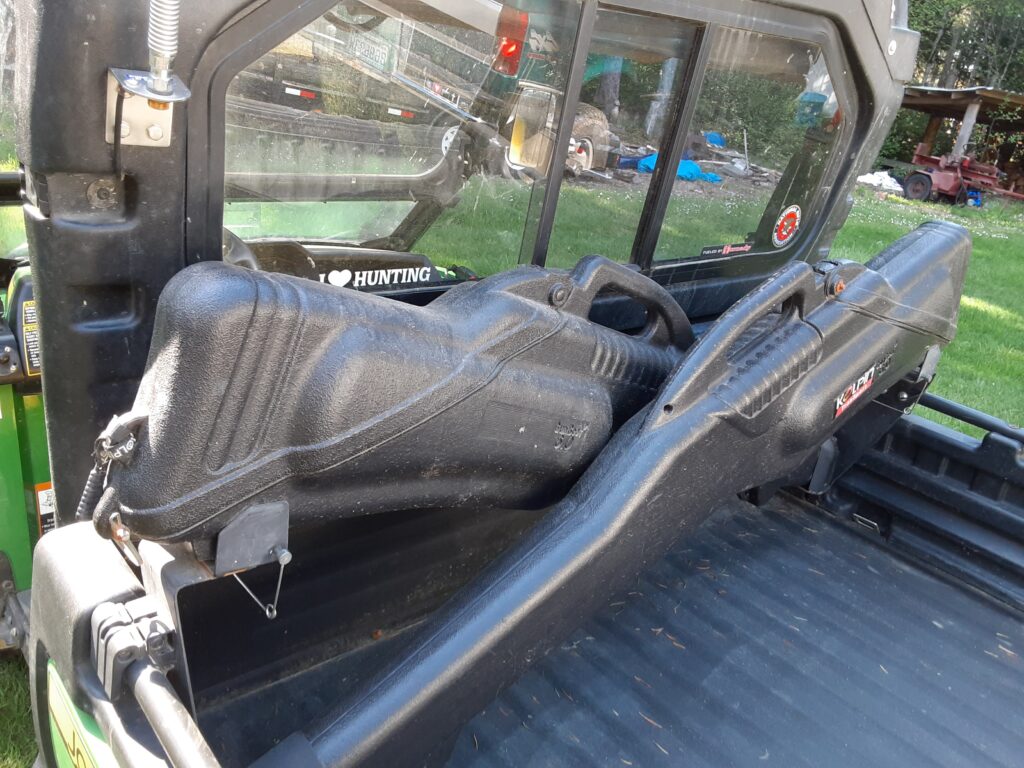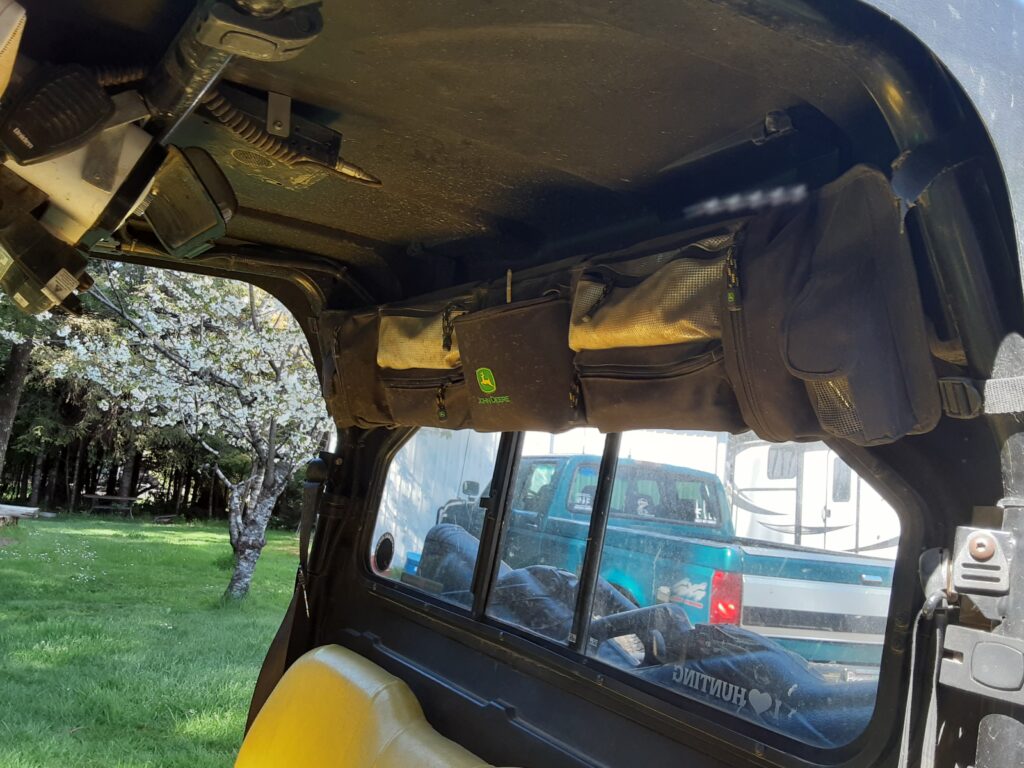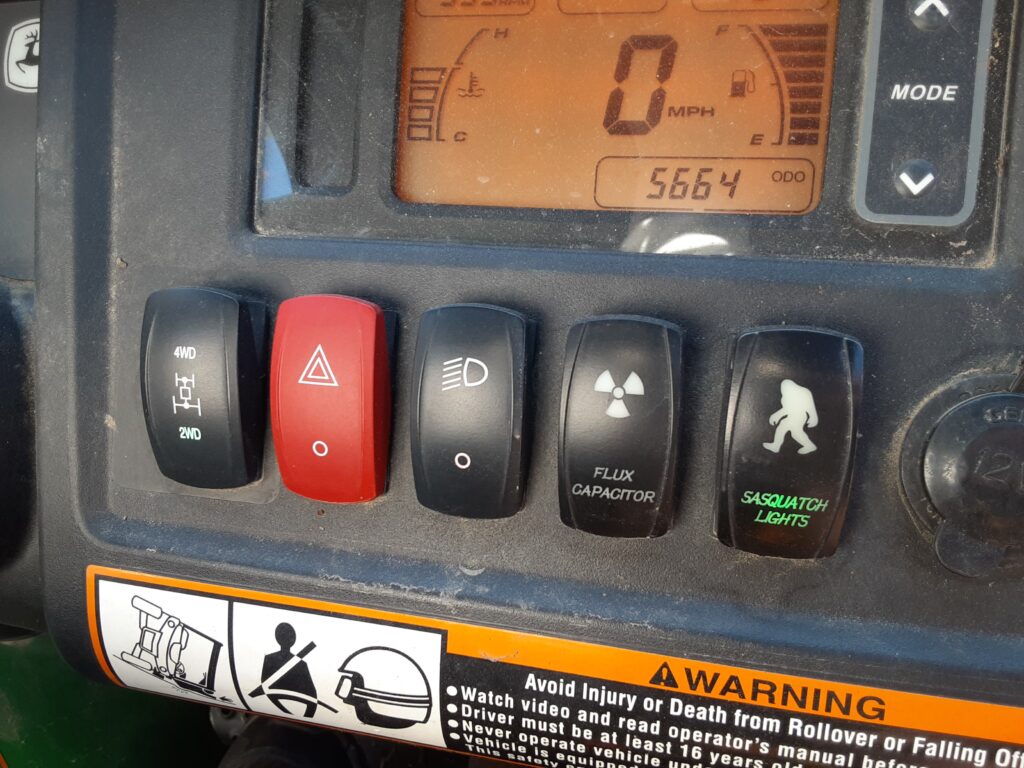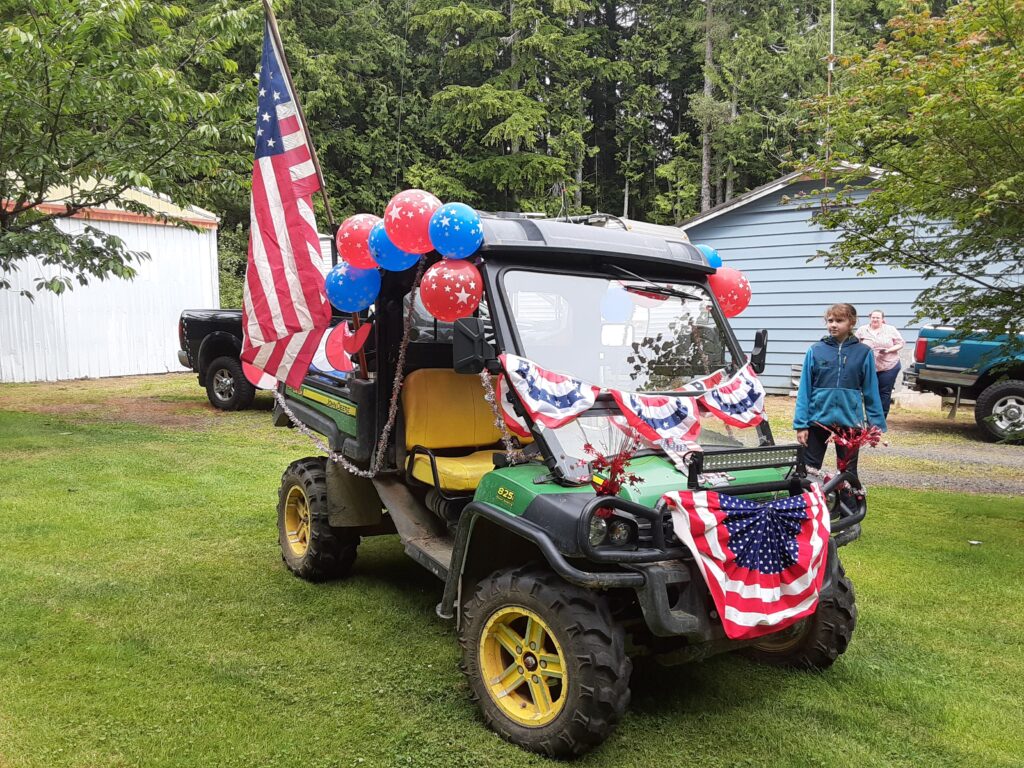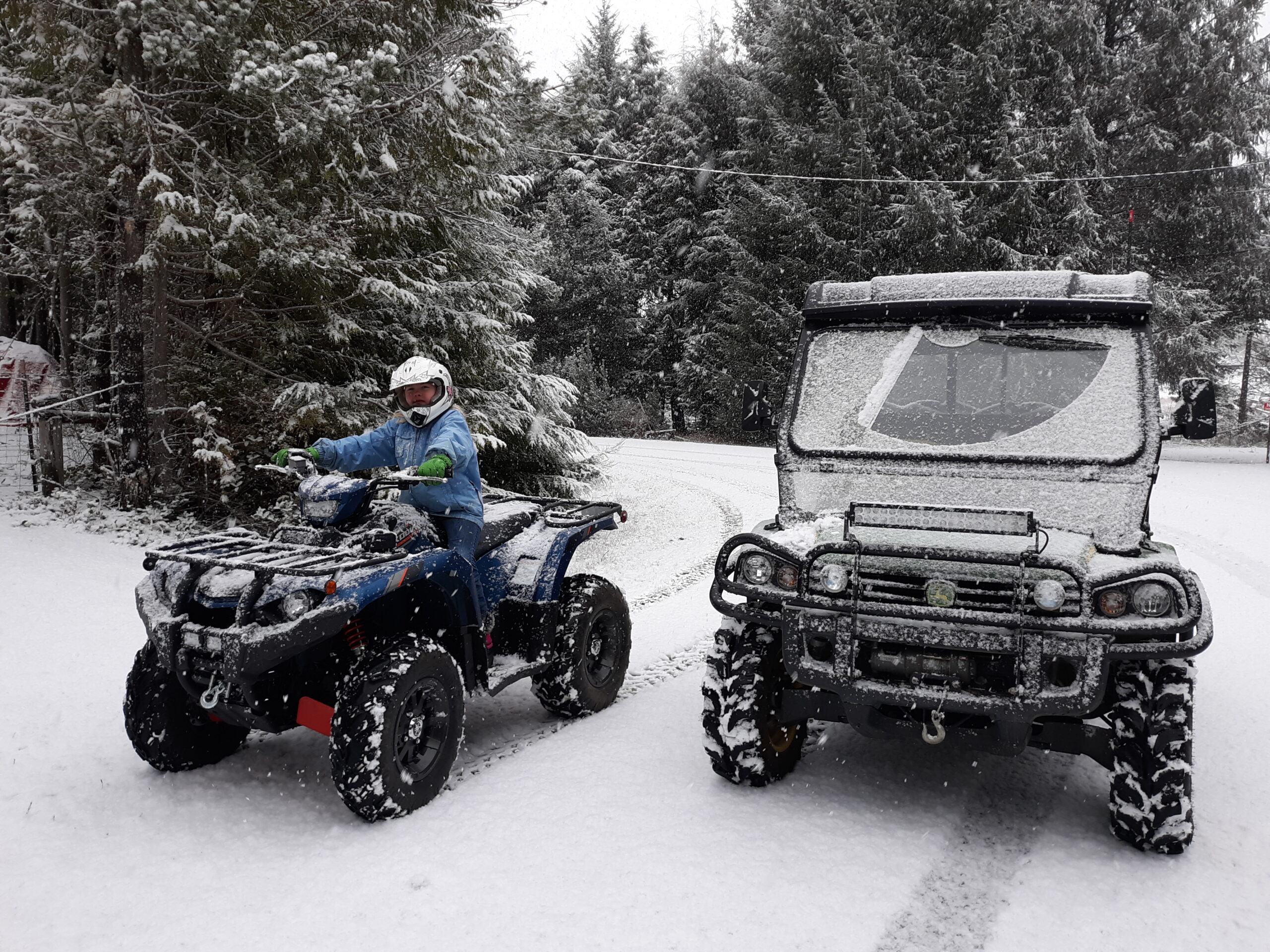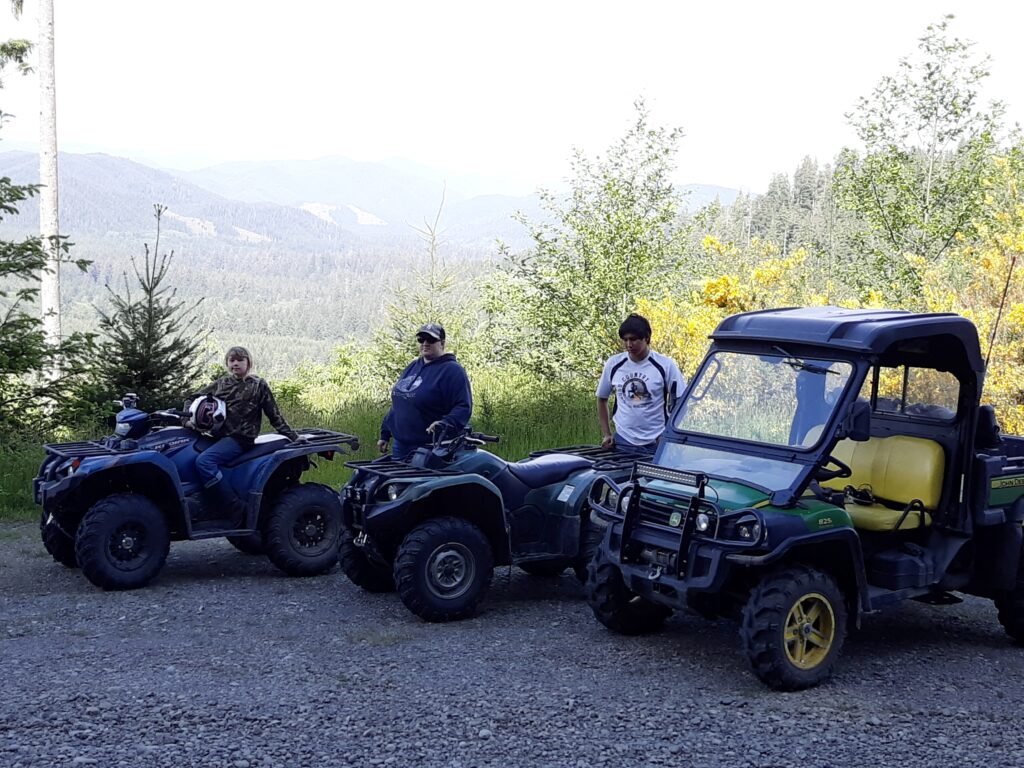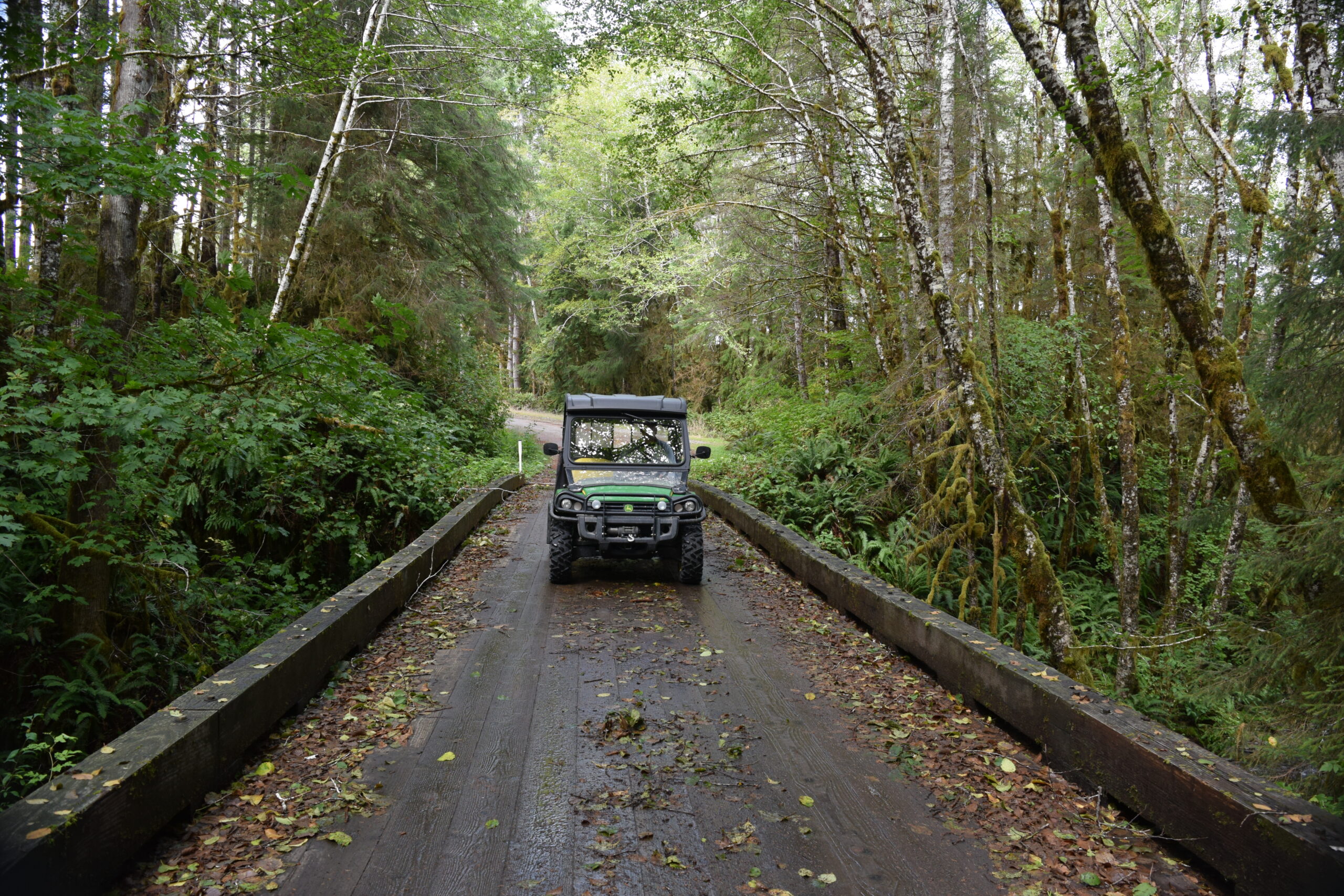Gator 825i
We wanted to get a UTV or side by side for several years so we finally pulled the trigger and bought a John Deere Gator 825i several years ago. We looked at and researched all the major brands of UTV’s out there and decided on the Gator as it was built heavier, had greaseable parts, had a smooth ride, and held up good to the abuses that Army personnel put them through and the price was virtually the same as the others.
We bought ours in August 2014 and it was the “Fair special” at the county fair so it had a power dump bed, power steering, sprayed in bedliner, fender guards, taillight guards and other goodies included in the package with good financing rates. We went ahead and purchased the roof and real glass windshield with it so we could stay out of the weather somewhat.
The off-road capabilities were truly amazing when you put it in four-wheel drive and activated the differential locker as it would literally climb a tree so steep banks were no problem at all. Deep water is a problem as the drive belt gets wet when the water level gets above the floorboard of the cab so then you can only move a foot or two at a time until you get the belt dried out. That is the only downfall that we had found so far. We debated on the optional cab heater when we bout it, but the heat from the front mounted radiator keeps the inside of the sab warm and just a cheap little 12v dc heated fan keeps the windshield defrosted so it really wouldn’t have been needed.
We primarily ride on the logging roads and trails for recreation and hunting so we customized our Gator to those needs. A winch for self-recovery or retrieving big game was an obvious first step so I added a warn winch after fabricating a mount for it and made a custom bracket to mount the winch control on. It has saved us several times over the years so it was well worth the work it took to install it.
A good solid gun rack was definitely needed and we could not find many that fit the Gator without extensive mount modifications so we bought the John Deere two-gun rack that just snaps on and off with a cam lock so it was a good investment. You can also remove it in only a few seconds if you need to use the entire bed. We also bought the interior John Deere overhead organizer to hold all of our goodies and tools as it also fit perfectly with no modifications.
Constant Velocity or CV boot protectors were also a must so I bought a set of steel ones for all four corners so the CV joints are well protected. Once you rip a CV boot it is all downhill from there as dust and dirt will get in leading to failure of the CV joint. While this isn’t necessarily a costly repair it is very time consuming to fix so spend the extra money up front to help reduce the chances of it happening. This also essentially made the underside of the Gator one big skid plate from front to back so you can winch the Gator over obstacles without damaging anything. This is very important because if you haven’t high-centered a rig yet that means that you never have left a well-maintained road in your life.
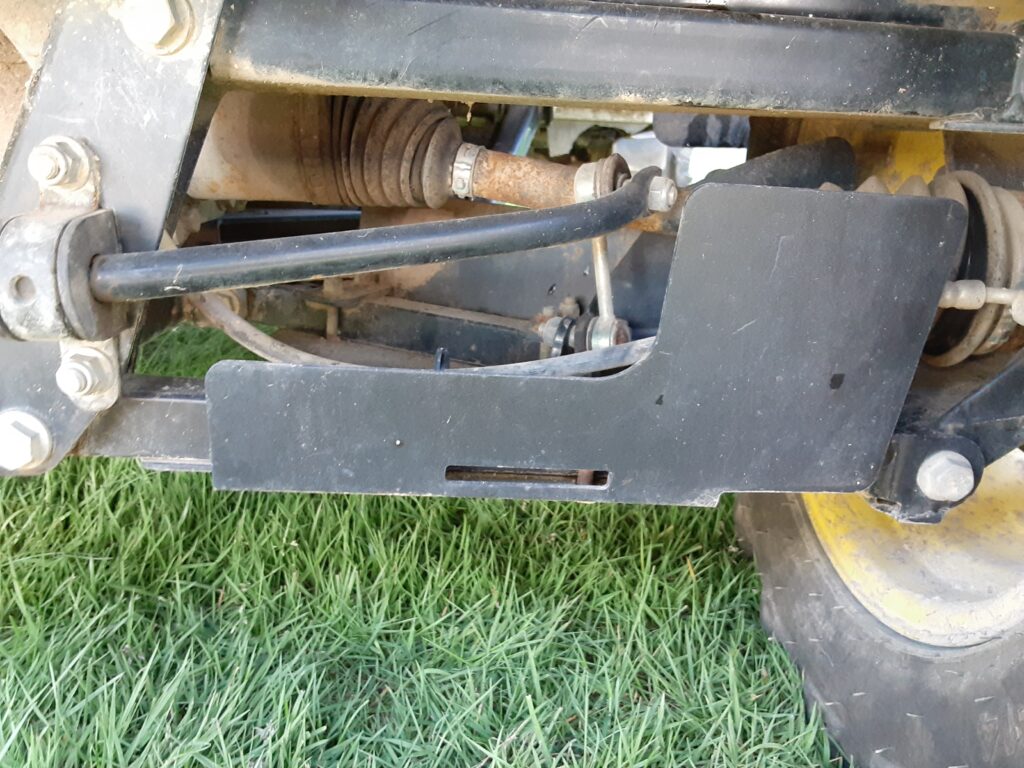
CV guards 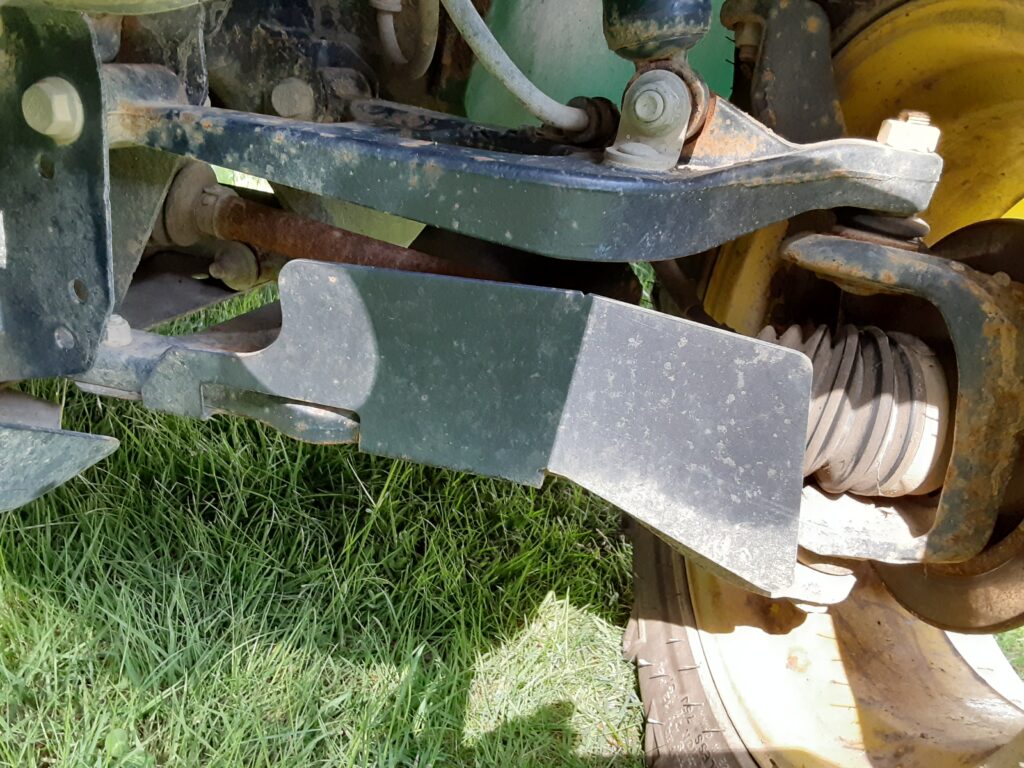
CV Guards
Since we are almost exclusively in remote places without cell service, I installed a 2-Meter ham radio to give us reliable communications for problems or emergencies without relying on cell service. Some ham radio systems have a “RTI” (Radio telephone interconnect) or “Autopatch” in the ham world that allows you to make phone calls over the radio without any cell service for emergency calls. They work great and you do have to remember that you are on the air and that you cannot talk and listen at the same time so you have to unkey your radio to hear the other party. A cheap CB radio was installed so we could keep track of trucks on the logging roads and get out of the way before they reached us. I also installed a marine stereo and speakers so we could listen to music on an SD card when “The” radio station is out of range.

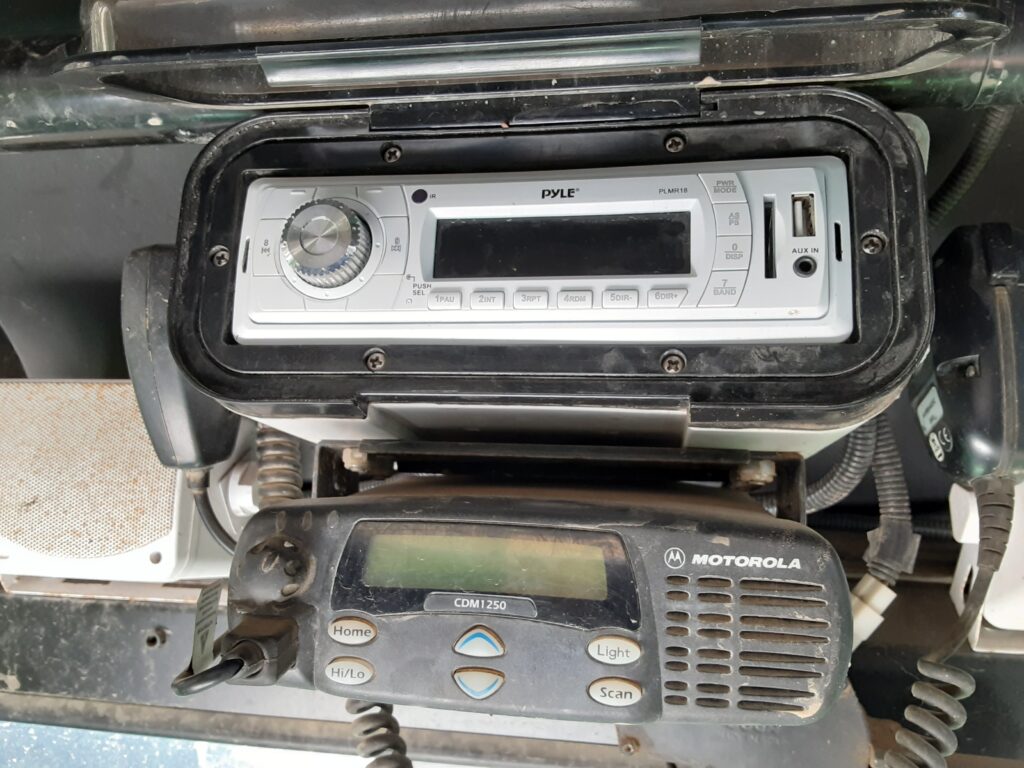
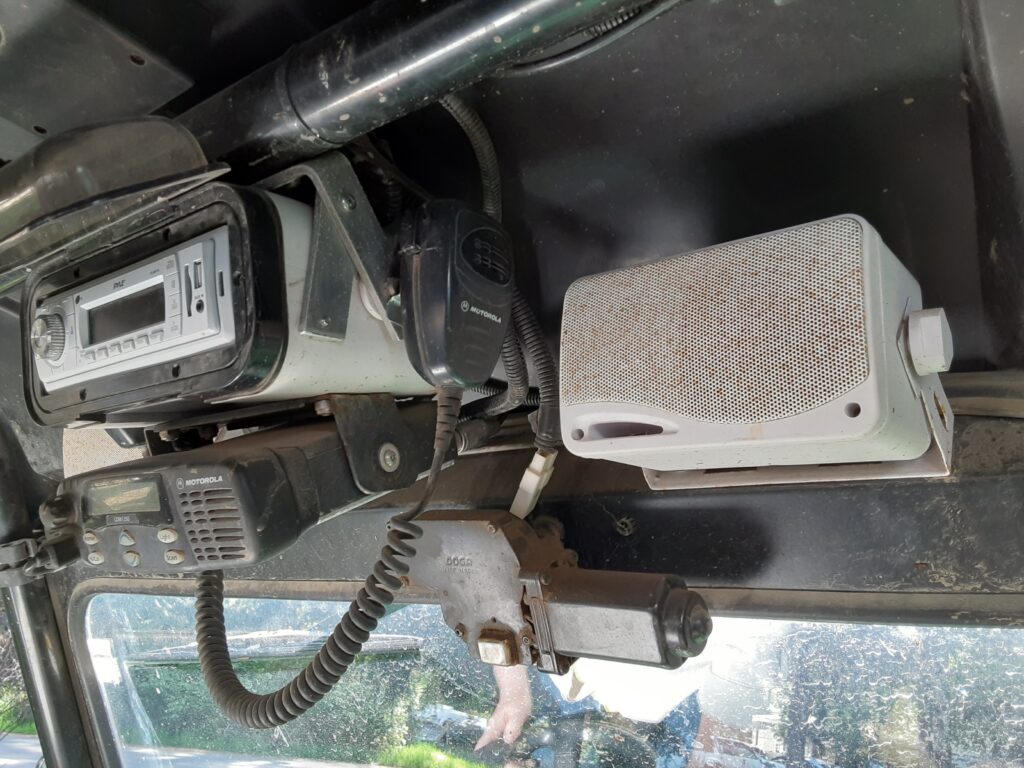

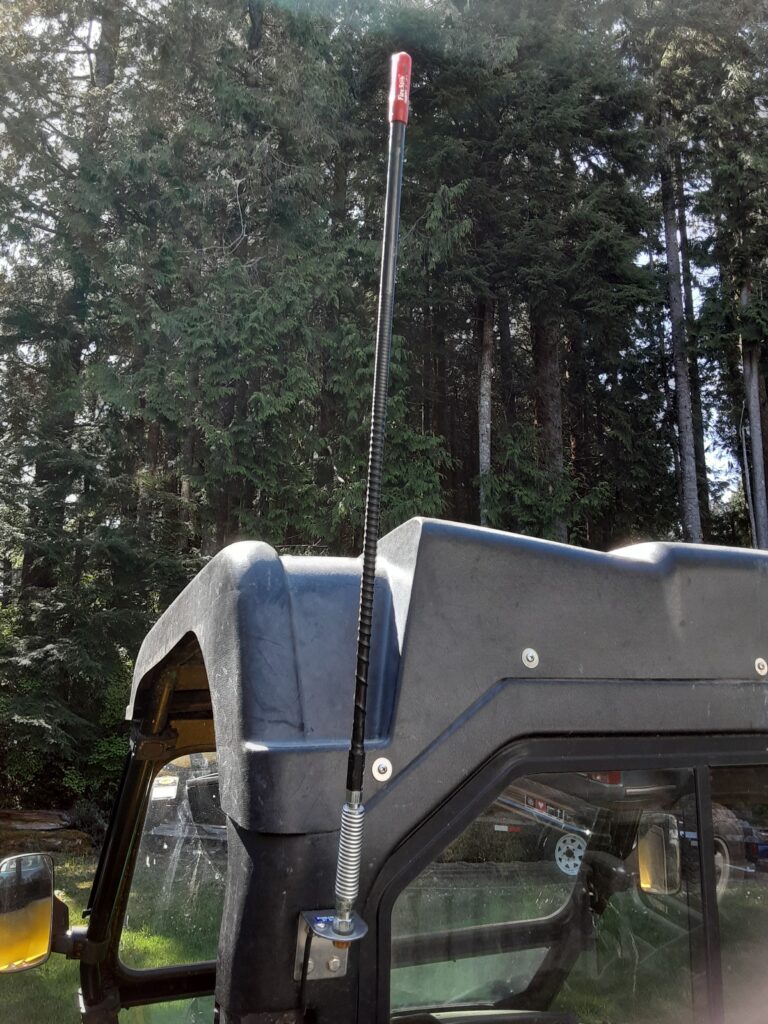
CB antenna 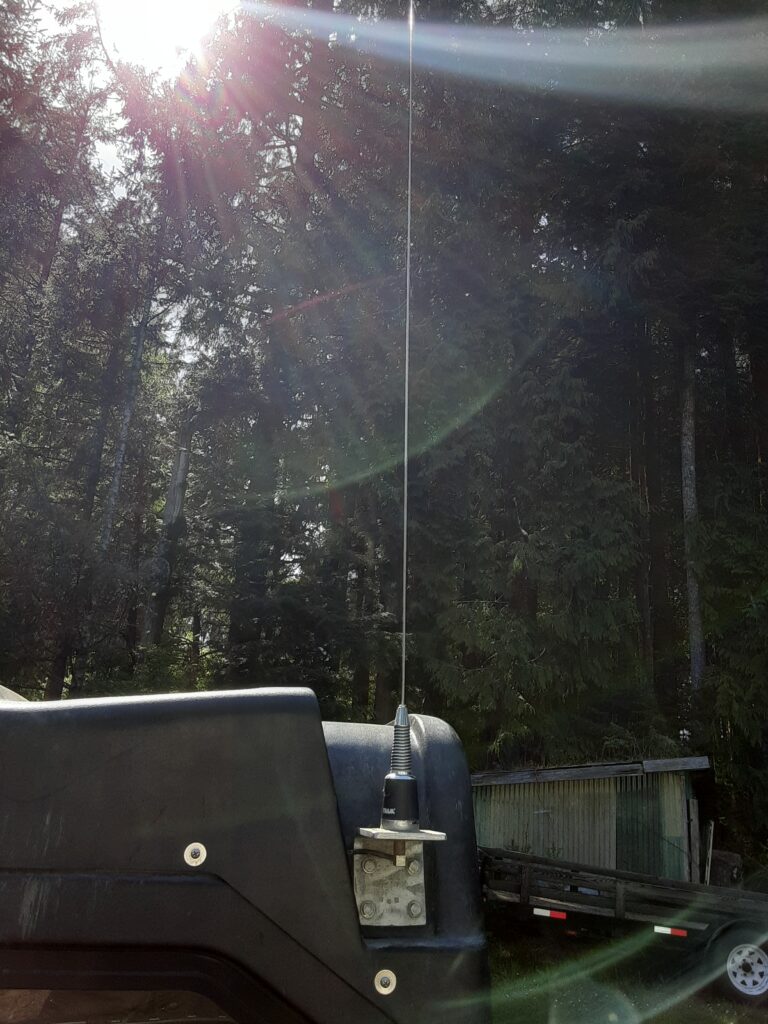
2-Meter antenna
There isn’t a lot of daylight hours during hunting season and we do enjoy night riding so I installed a set of Halogen driving lights and a good LED lightbar. The theory was the Halogen lights would melt the snow off quickly if needed and the LED lightbar would catch up eventually. The Gator does have a 55-amp alternator so it keeps up very well with all the lights and electronics, which was another reason why we chose it. I did switch the factory headlight bulbs out for LEDs just to reduce the amperage draw. The LED headlight bulbs are virtually worthless for nighttime driving, but the color of the light makes them more visible during the daylight so don’t expect bright lights if you swap them for the cheaper LED bulbs. This wasn’t a concern to us because of the additional lighting and the problem we had was that we had to leave the key on to hear the ham radio and the battery died quickly if we didn’t notice that the headlights were left on. The tail and brake lights were upgraded to better quality LED ones to also help stop draining the battery when the key was on without the engine running.
The Gator is wider than many of the other UTVs out there so make sure you take that into consideration if you have any bridges to cross or narrow trails. The wider stance and low center of gravity lets it take some extreme sidehill angles without any problem. I’m not sure how steep, but it’s well past the point of scaring you angle. The factory tires were bald just before 3,000 miles so we got more aggressive 6 ply tires to replace them. The 825i is not the speed model and has a governor set at 45 mph, but it is the heavy-duty utility model that will go just about anywhere so it’s perfect for hunting.
